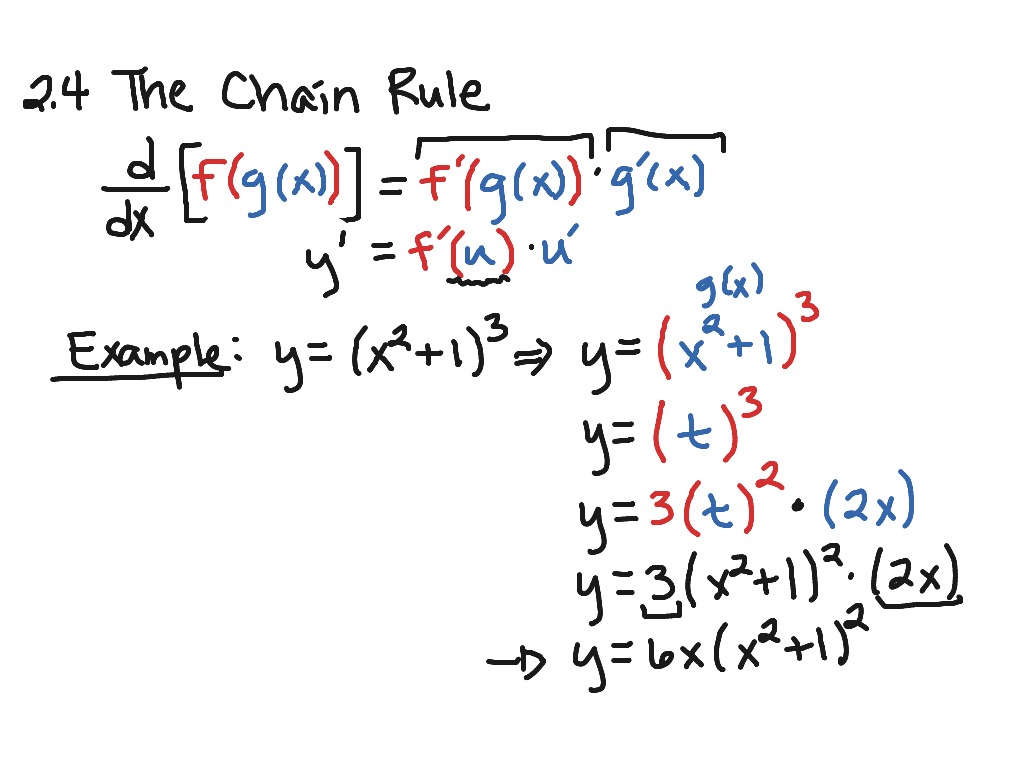
Now that we have found the derivative correctly, let’s simplify the final answer using algebra.

Just don’t forget that step of plugging back in u = g( x). Here, the rule has been written in Leibniz notation, and clearly expresses the fact that the derivative of a composition is really just the product of the derivatives of the individual functions. Multiply by the derivative of the inside.Įquivalently, if y = f( u), and u = g( x), then.Then the composite function, f( g( x)) is also differentiable, and Suppose f and g are differentiable functions. (Inside function, or g( x)): u = 4 x – 2. (Outside function, or f( u)): y = u 3, and To make it clearer, we often use a different variable name, such as u, for the input variable of the outside function.įor example, if y = (4 x – 2) 3, then the most natural decomposition would be:
#Chain rule calculus with steps how to
In other words, you have to learn how to decompose a composite function into a pair of functions - the outside and inside functions. To use the Chain Rule properly, you need to know how to go the other direction. We might call f the “outside” function, and g the “inside” function.įor example, if f( x) = sin( x), and g( x) = x 2 + 1, then their composition is:

If f( x) and g( x) are two functions, then we call f( g( x)) the composition of f and g. We use the Chain Rule to find the derivative of a composition of functions, that is a function of the form f( g( x)). If so then I hope that by the end of this short article, you’ll gain a better appreciation for the Chain Rule and how it is used in derivative problems.

Many students dread the rule, think that it’s too difficult, don’t fully understand where to apply it, and generally wish that it would go away. Of all the derivative rules it seems that the Chain Rule gets the worst press.


 0 kommentar(er)
0 kommentar(er)
